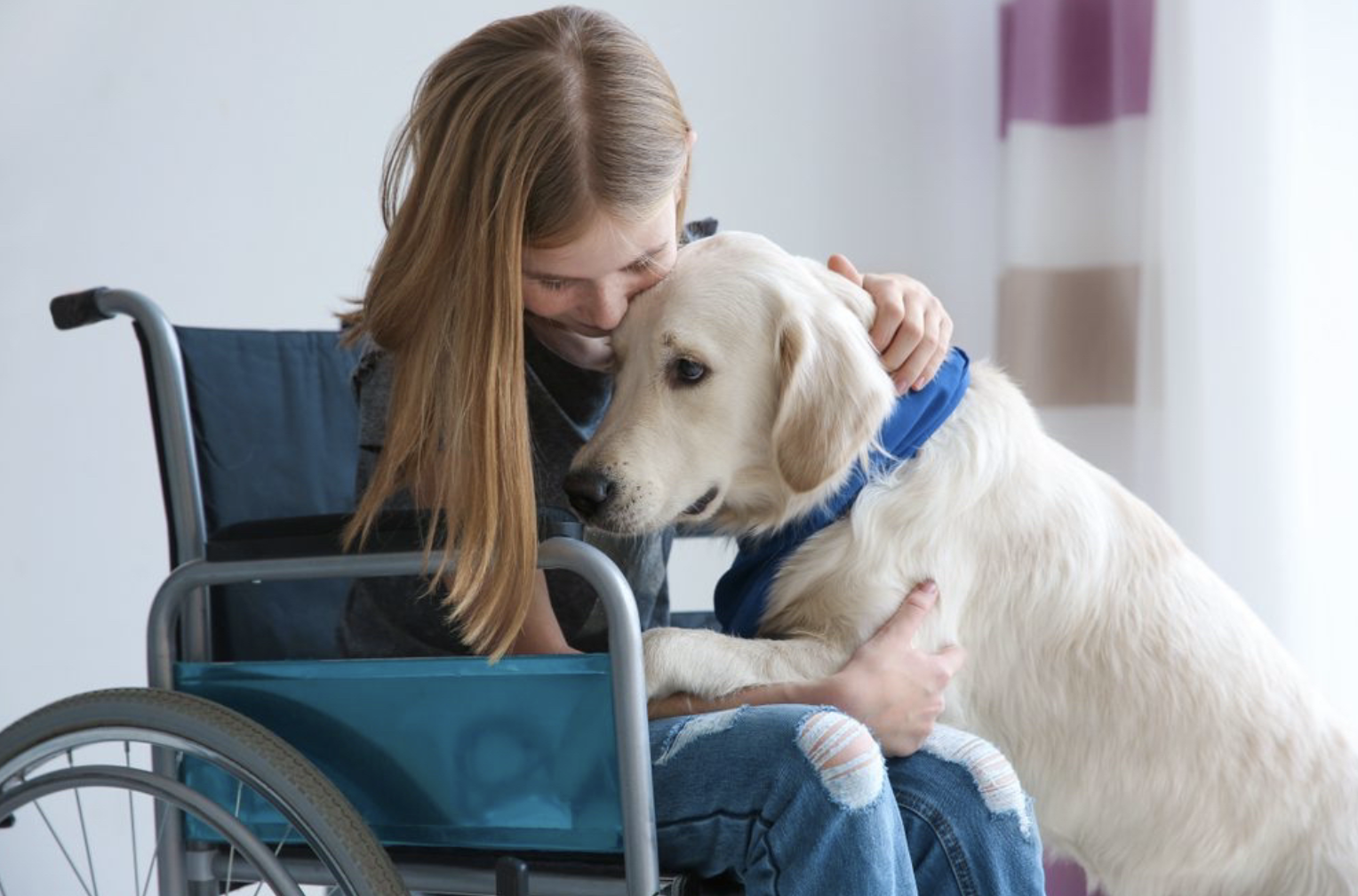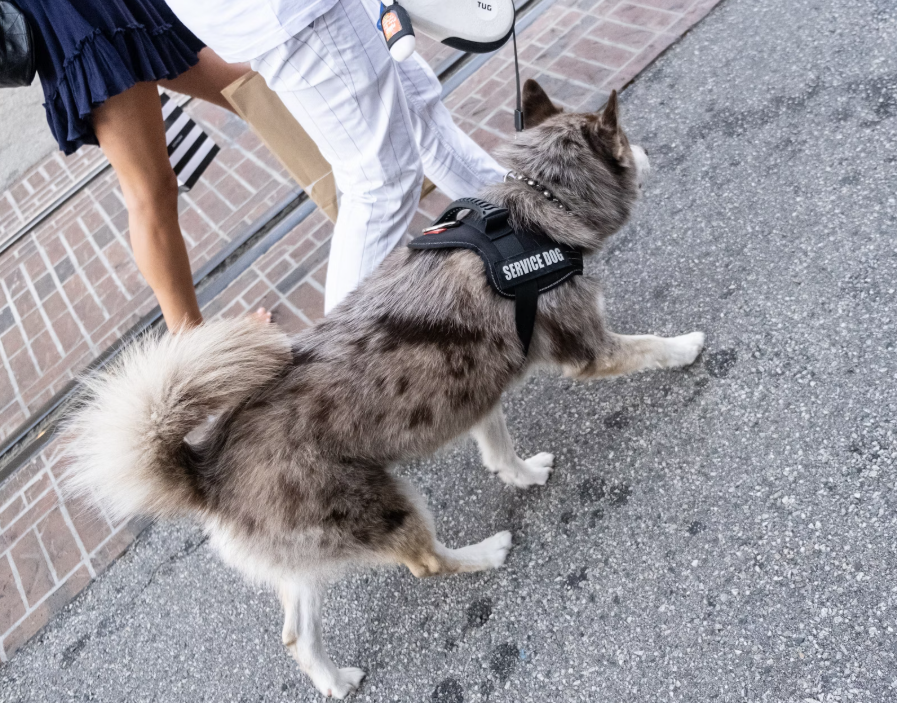- What is Psychiatric Assistance Dog?
- Eligibility Requirements for a Psychiatric Assistance Dog
- Steps to Qualify Your Dog as a Psychiatric Assistance Dog
- Key Traits and Characteristics of a Qualified Psychiatric Assistance Dog
- Additional Considerations for Qualifying Your Dog
- Is Qualifying Your Dog for Psychiatric Assistance Right for You?
Psychiatric assistance dogs are life-changing companions specifically trained to support individuals with mental health needs. These dogs are not only pets; they’re trained partners that help their owners manage symptoms associated with conditions like anxiety, depression, PTSD, and more. Unlike emotional support animals (ESAs), which provide comfort through companionship alone, psychiatric assistance dogs perform specific tasks that alleviate symptoms, enhance safety, and improve daily function.
If you’re exploring the option of qualifying your dog for psychiatric assistance, it’s essential to understand the steps, requirements, and benefits. This guide provides a roadmap for the qualification process, helping you determine if this path could improve your life or the life of a loved one.
What is Psychiatric Assistance Dog?
A psychiatric assistance dog is a type of service animal trained to assist people with psychiatric disabilities by performing tasks that address their unique needs. This differs from emotional support animals, which do not require specialized training and are primarily present for emotional comfort. Psychiatric assistance dogs are legally recognized service animals, giving them access to most public spaces, including workplaces, airplanes, and restaurants.
Some of the tasks these dogs may perform include alerting their owner to an impending anxiety or panic attack, providing tactile grounding to reduce symptoms of stress, and helping their owner navigate safely through overwhelming environments. Their training, loyalty, and intuitiveness make them invaluable allies for individuals with mental health needs.
Eligibility Requirements for a Psychiatric Assistance Dog
Who Qualifies for a Psychiatric Assistance Dog?
To qualify for a psychiatric assistance dog, an individual must have a diagnosed mental health condition that significantly impacts their daily life. Common conditions include:
• Anxiety Disorders: Panic disorder, generalized anxiety disorder, or social anxiety disorder
• Post-Traumatic Stress Disorder (PTSD): Especially common among veterans and survivors of traumatic events
• Depression: Including major depressive disorder and bipolar disorder
• Obsessive-Compulsive Disorder (OCD): Severe cases where symptoms interfere with daily activities
A licensed mental health professional, such as a psychiatrist or psychologist, can provide documentation of the condition and assess if a psychiatric assistance dog would be beneficial. This documentation is crucial for qualifying your dog as a psychiatric assistance animal.
Legal and Medical Documentation
For an individual to legally qualify for a psychiatric assistance dog, they typically need a letter or documentation from a licensed mental health provider. This document should specify:
• The individual’s diagnosed condition
• How the condition limits major life activities
• The therapeutic benefit a psychiatric assistance dog would provide
This documentation can be useful for ensuring legal protections, particularly in places with access restrictions, and serves as a formal recognition of the need for psychiatric assistance.
Steps to Qualify Your Dog as a Psychiatric Assistance Dog
Step 1: Understanding Your Needs
The first step in qualifying your dog as a psychiatric assistance dog is to evaluate your own needs. Working with a mental health professional can help determine specific symptoms or situations where a dog’s assistance could be helpful. For instance, you may need help with anxiety management, physical grounding during panic attacks, or reminders to take medication.
Understanding your needs helps identify which tasks your dog will need to perform and whether your current dog or a new dog might be suitable for this role.
Step 2: Selecting the Right Dog
Not every dog is naturally suited to psychiatric assistance work. Some key characteristics to look for include:
• Temperament: Psychiatric assistance dogs should be calm, gentle, and non-reactive in various environments, especially in public spaces.
• Intelligence and Trainability: A psychiatric assistance dog needs to learn and retain complex commands, respond to cues reliably, and adapt to different situations.
• Emotional Sensitivity: Dogs that are attuned to human emotions are better able to recognize signs of stress or anxiety, making them well-suited for psychiatric assistance roles.
If you already have a dog, consider if they naturally exhibit these traits. Alternatively, you may want to select a dog breed known for these qualities, such as Labrador Retrievers, Golden Retrievers, or Poodles, which are commonly chosen for assistance roles.
Step 3: Training Requirements
Once you’ve selected a suitable dog, it’s time to begin training. Psychiatric assistance dog training includes several phases, covering essential skills and specific tasks related to psychiatric support.
• Basic Obedience Training: All psychiatric assistance dogs need a strong foundation in basic commands such as “sit,” “stay,” “come,” and “calm.” These are essential for both home and public settings.
• Specialized Task Training: Depending on the handler’s needs, psychiatric assistance dogs may be trained to perform tasks like:
• Alerting to panic attacks
• Providing deep pressure therapy by lying across the handler’s lap
• Guiding the handler out of a stressful environment
• Interrupting repetitive behaviors related to anxiety or OCD
• Public Access Training: This ensures the dog can behave calmly and reliably in public settings. They must learn to ignore distractions, avoid barking or reacting to strangers, and remain focused on their handler.
Working with a certified trainer or enrolling in a specialized psychiatric assistance dog program can be beneficial if you’re training a dog for the first time.
Step 4: Certification and Legal Designation
Certification requirements for psychiatric assistance dogs vary depending on location. Some regions have formal certification programs, while others recognize psychiatric assistance dogs without requiring specific certifications.
In areas without formal certification, possessing documented proof of a mental health condition and having your dog trained to perform necessary tasks may be sufficient for legal recognition. Consult local laws to understand the specific requirements in your area.
Key Traits and Characteristics of a Qualified Psychiatric Assistance Dog
To be effective, a psychiatric assistance dog should possess certain key traits, including:
• Temperament: Psychiatric assistance dogs should be calm, steady, and resilient in various situations. They must not react negatively to loud sounds, crowded spaces, or other animals.
• Emotional Sensitivity: Dogs that can naturally sense human emotions are better able to respond to their handler’s needs, especially during anxiety or depressive episodes.
• Trainability: A psychiatric assistance dog must be able to learn, retain, and perform complex tasks.
• Adaptability: Psychiatric assistance dogs should be comfortable in diverse environments, from quiet home settings to busy public spaces.
Additional Considerations for Qualifying Your Dog
Time and Commitment
Training a psychiatric assistance dog requires a significant time commitment. Handlers must dedicate time to reinforce training, attend sessions with trainers, and provide daily care for the dog.
Financial Investment
Qualifying a dog as a psychiatric assistance animal involves costs, including professional training, veterinary care, certification fees (if applicable), and equipment like harnesses or vests.
Public Access and Etiquette
Psychiatric assistance dogs often accompany their handlers into public spaces, and maintaining good etiquette is essential. Training a dog to be calm and unnoticeable in public ensures that they don’t disrupt others, which is important for gaining and maintaining public access privileges.
Success stories highlight the transformative impact of psychiatric assistance dogs. For example, a veteran with PTSD may find relief through their dog’s assistance, feeling grounded during stressful situations and gaining the confidence to navigate public spaces. Another example is an individual with severe social anxiety who finds new independence as their dog provides constant, comforting support in social settings.
These stories illustrate the profound, positive influence of psychiatric assistance dogs on mental health and quality of life. Through their dedication and unique training, these dogs become essential companions, helping their handlers thrive.
Is Qualifying Your Dog for Psychiatric Assistance Right for You?
Qualifying a dog for psychiatric assistance is a significant commitment, but for those with mental health needs, it can be incredibly rewarding. From alleviating stress to supporting independence and enhancing daily productivity, psychiatric assistance dogs bring transformative benefits to their handlers’ lives. If you’re considering this path, take the time to assess your needs, consult a mental health professional, and research training options to determine if a psychiatric assistance dog could help improve your quality of life.













